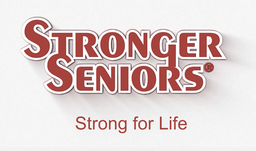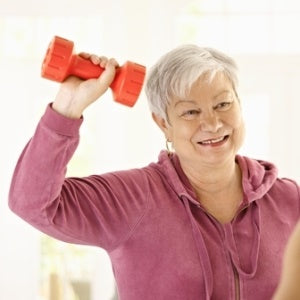Bones naturally grow more brittle and prone to breaks and fractures as we age, so it should come as no surprise that bone health becomes increasingly important as we get older.
According to the Australian Institute of Health and Welfare, one in every four males and two in every five women over the age of 50 will suffer from a mild trauma fracture.
As a result, maintaining bone strength and durability through nutrition and exercise becomes priority number one in an effort to avoid damage and the development of illnesses such as osteoporosis, which affects 66% of people over the age of 50.
Dane Ford, physiotherapist and creator of Lift Physiotherapy and Performance, concurs, noting that "maintaining good bones is crucial for people of all ages, but it gets increasingly important as we age."
"We tend to lose bone mineral density as we age," he says. "However, there are a variety of activities that older folks may do to help maintain their bones healthy."
The importance of bone health and the measures required to ensure healthy bones are highlighted as part of Healthy Bones Action Week (August 21-27), as Australians are urged to take their bone health seriously.
With the negative physical consequences of poor bone health, as well as the alarming number of seniors who are affected, in the spotlight, Ford spoke further to gain a better understanding of the signs that can indicate poor bone health, the risk factors that can contribute to a break or fracture, and what preventive measures can be taken to reduce the risk.
Early "warning signals" of bone disease
Poor bone health and disorders like osteoporosis have few, if any, visible symptoms or warning indicators. Unfortunately, it is sometimes necessary to experience a painful break or fracture before such a condition is recognized or diagnosed.
However, Ford points out that there are several "warning indicators" to look out for that can provide insight into one's bone health.
Some of these warning indicators include weakness, soreness, a loss of height, and bad posture. It's tempting to dismiss them as indications of aging, but being aware of these changes and recognizing their severity can help prevent painful damage down the future.
"Another aspect to consider is medication required for co-existing medical conditions (such as steroids), which can have the negative side effect of bone loss - it's vital to be aware of this so that we can take actions to minimize these negative consequences."
The structure of bones is continually changing, with new bone being regenerated to replace the old, but "as we age, bone loss occurs at a faster rate than bone development."
"This could be attributable to a variety of circumstances." First, as we age, our systems produce less of the hormones that aid in bone formation and maintenance," Ford explained.
"Seniors are also often less active than younger folks, which can result in disuse atrophy and bone mineral loss."
Keeping your bones healthy and strong
Given that the result of poor bone health is sometimes a painful break or fracture, it's critical to take precautions to avoid such catastrophic repercussions.
In this case, prevention is clearly preferable to cure, and as with any chronic health problem, there are a variety of lifestyle adjustments and behaviors that may be implemented to ensure optimal bone health.
Maintaining excellent bone health requires proper vitamin D and calcium intake, and quitting smoking and drinking alcohol can reduce the risk of bone loss. Ford's "favorite approach to increase bone health," on the other hand, is resistance training.
"Weight-bearing exercise like weight training, walking, or dancing can also assist preserve bone density," he says.
"Resistance training, often known as weightlifting or strength training, is an excellent method for increasing bone mineral density.
"When you lift weights, your bones grow stronger and denser." This is due to the fact that they are being reshaped to better support your body. This is especially advantageous for older folks, who lose bone mass as they get older.
"Resistance training has been demonstrated to offer additional benefits, such as building muscle mass, decreasing body fat, and improving balance and coordination, in addition to promoting bone health." As a result, resistance training has numerous vital health and well-being benefits."



